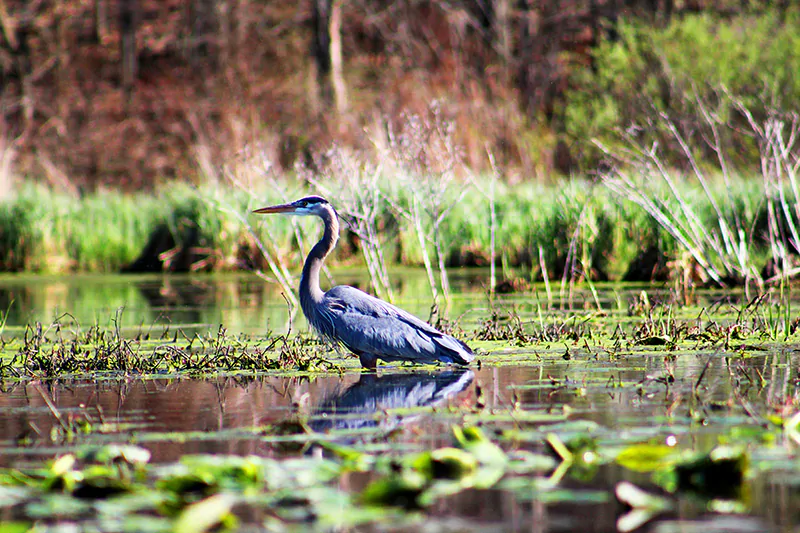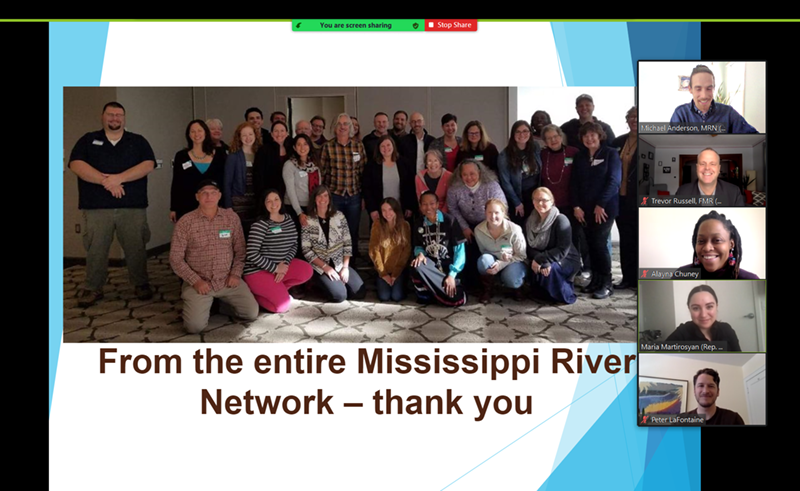MRN Members Spring Forward with Nearly 30 Congressional Meetings
Last month, Mississippi River Network (MRN) Members participated in nearly 30 meetings with Congressional decision-makers and their staff as part of our Spring 2021 virtual “fly-in.” We shared our policy priorities as they relate to flooding, resilience, and restoration on our cherished Mississippi River. 14 MRN member organizations participated in meetings in all 10 mainstem River states.
Wait a minute, what is a “fly-in”?
A “fly-in” is an opportunity for constituents to speak directly to Congressional offices in Washington, DC about issues that are important to them. It’s an important way for Senators and Congresspeople to stay connected to what is happening back in their home states and districts. The Mississippi River Network (MRN) has members all up and down the River’s corridor, so we were connecting our members to their decision-makers’ offices on the Hill. If it weren’t for the pandemic, individuals from MRN member organizations would have packed their bags and flown in from one of our 10 mainstem Mississippi River states and visited with staff in our nation’s Capitol. Instead, we visited with these decision-makers and their staffs virtually – in some cases, this was the 3rd time in the last 12 months that we have visited with these offices in a virtual format! 

Three things we wanted Congress to know
During this fly-in, MRN members shared their policy priorities as they relate to flooding, resilience, and restoration on the River. We were also joined by state legislators who are part of the National Caucus of Environmental Legislators and are supporting our priorities in our state legislatures. We know it will take both state and federal action to achieve our vision of a healthy and resilient River, so we were thrilled for their participation.
1. We can use more tools in our toolbox to respond to flooding We are coming up on flood season in the Mississippi River basin. Just two years ago around this time, we would have been amid the historic 2019 floods that devastated communities all up and down the River corridor. While NOAA and the National Weather Service continue to predict a normal to below-normal flood season this year, we wanted to use this opportunity to speak to our Congressional offices about nature-based and non-structural solutions to flooding. We shared that “natural infrastructure”– or healthy rivers, reconnected floodplains, and restored wetlands – is a vital tool to reduce flood and storm damages, protect water quality, and enhance wildlife habitat all while creating economic opportunities across the nation (Read more about the economic value of rivers in American Rivers’ report Invest in Rivers.) Of course, traditional built infrastructure — levees, dams, and other static, concrete structures — has its place in the toolbox. But just like “fire suppression only” tactics for forest management out West created the perfect situation for catastrophic wildfires, an outsized reliance on built infrastructure is creating the perfect situation for historic flooding more years than not, especially given the impacts of the climate crisis. We need to use all of the tools in our toolbox when it comes to flood resilience in the Mississippi River corridor. We shared that we were happy to see the Biden-Harris Administration’s reinstate the Federal Flood Risk Management Standard. This standard urges all federal agencies to use nature-based solutions wherever possible. You can read more about the Federal Flood Risk Management Standard from our MRN Members:
- NRDC’s Joel Scata writes Biden Reinstates Flood Protection Standard
- American Rivers’ Eileen Shader writes Biden Administration Takes First Step Toward Flood Resilience
2. We need a federal program dedicated to the River As residents from communities all along the River, we know that the Mississippi River is a treasure that gives us so much to be grateful for: drinking water for over 20 million people, a flyway for over 60 percent of North America’s migratory birds, and precious wildlife and habitat for hundreds of species. And while we’ve come a long way in cleaning up and caring for the Mississippi River since the passage of the Clean Water Act over 50 years ago – our River is still in decline. Other treasures like the Puget Sound, Chesapeake Bay, the Everglades, and the Great Lakes all have federal programs that have demonstrated the impact of a dedicated federal program. Now, it’s time we gave the River what it deserves: a dedicated national program of its own! We’re happy to support Congresswoman Betty McCollum’s vision for a Mississippi River Restoration and Resilience Initiative and we heard positive interest from Congressional offices all along the River as part of this fly-in.
3. We want to engage at the state and district-level on these issues In addition to having staff in Washington, DC our decision makers also have teams based out of their home states and Congressional districts. During this year’s fly-in, we also spent more time getting to know the priorities of our decision makers and get better acquainted with their local staff. Our next step is to include you – our River Citizens – in meetings with local Congressional staff. What’s your vision for a healthy River? Would you be interested in sharing it with your local Congressional staff? If so, please reach out to our Policy Director Maisah Khan at mkhan@1mississippi.org!

Join our
COMMUNITY
And Get a Free E-book!
When you sign up as a River Citizen you’ll receive our newsletters and updates, which offer events, activities, and actions you can take to help protect the Mississippi River.
You’ll also get our free e-book, Scenes From Our Mighty Mississippi, an inspiring collection of images featuring the River.
Step 1
Become a River Citizen
Yes! The River can count on me!
I am committed to protecting the Mississippi River. Please keep me informed about actions I can take to protect the Mississippi River as a River Citizen, and send me my free e-book!, Scenes From Our Mighty Mississippi!
Step 2
LEARN ABOUT THE RIVER
We protect what we know and love. As a River Citizen, you’ll receive our email newsletter and updates, which offer countless ways to engage with and learn more about the River. You can also follow us on Instagram, Facebook, X (Twitter) , and YouTube, where we share about urgent issues facing the River, such as nutrient pollution, the importance of floodplains and wetlands, and bedrock legislation such as Farm Bill Conservation Programs.
Step 3
Take Action
There are many ways you can jump in and take action for a healthy Mississippi River. Our 10 actions list includes simple steps you can take at any time and wherever you are. Check out our action center for current action alerts, bigger projects we are working on, and ways to get involved.

